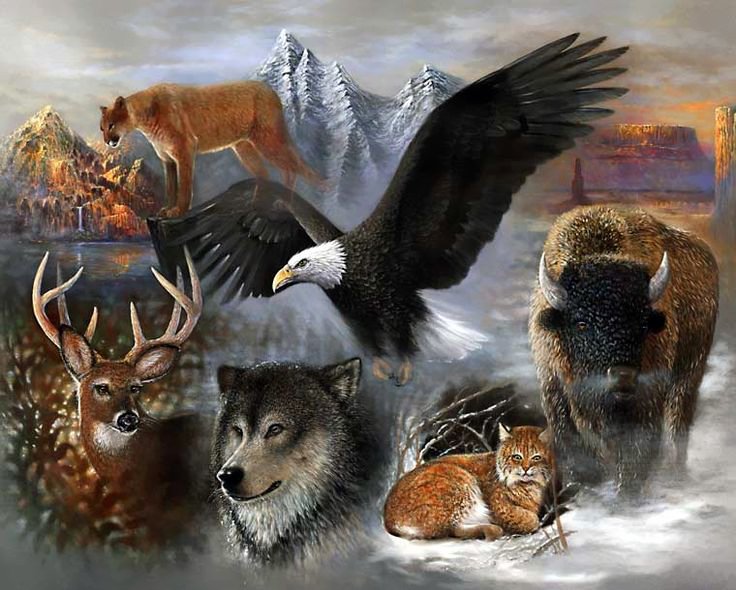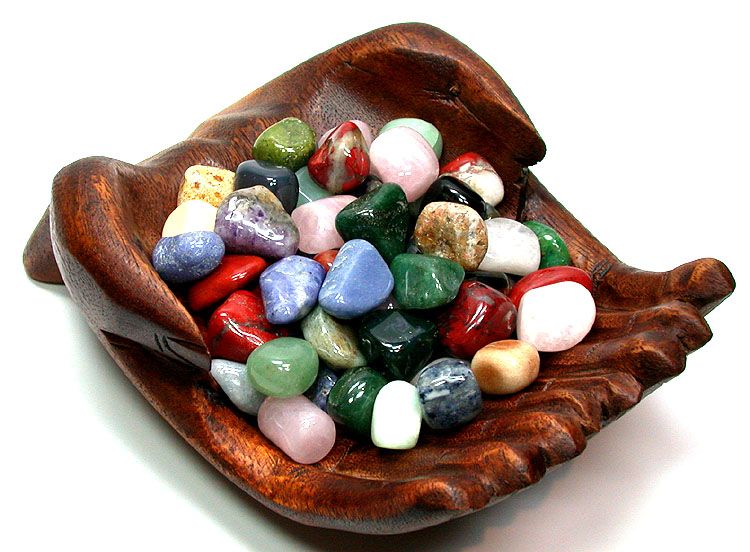Lammas by The Hedgewitch
- Details
- Written by CrystalWind.ca
- Views: 12042
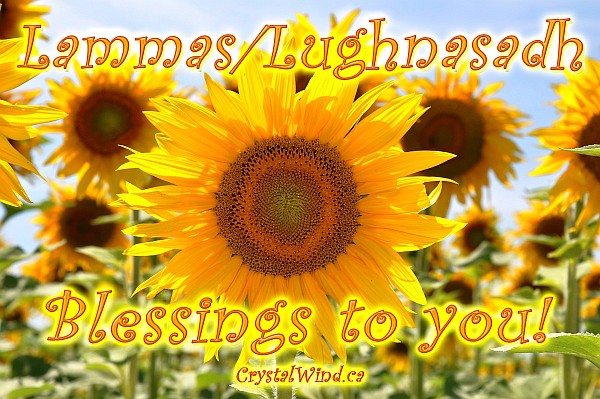
Although in the heat of a Mid-western summer it might be difficult to discern, the festival of Lammas (August 1st) marks the end of summer and the beginning of fall.
The days now grow visibly shorter and by the time we've reached autumns end (October 31st), we will have run the gamut of temperature from the heat of August to the cold of October.
"Lammas" was the medieval Christian name for the holiday and it means "loaf-mass", for this was the day on which the loaves of bread were baked from the first grain harvest and laid on the church altars as offerings. It was a day representative of 'first fruits' and early harvest.
Lammas marks the middle of summer and the beginning of the harvest season. Lammas is considered a time of thanksgiving and is the first of the three Pagan harvest festivals. The Sun's strength begins to wane and the plants of spring begin to wither and drop their fruits or seeds for our use as well as to ensure future crops. At this time, we become conscious of the sacrifice the Sun God is preparing to make. We experience a sense of abundance at the same time we begin to feel an urgency to prepare for the death of winter. First grains and fruits of the Earth are cut and stored for the dark winter months.
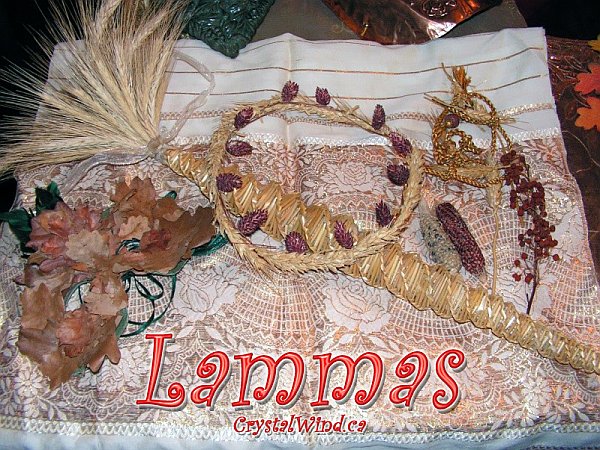
Lammas also represents the culmination of the marriage between the Goddess and the God that took place on Beltane. The God now becomes the product of that blessed union - the bountiful fruits and grains - and must be sacrificed. He is the personification of the crops that must be harvested for the survival of the people.
Underneath the symbolism of sacrifice is the theme of rebirth. The Corn God must die, and He has to do so in order to return. Without the sacrifice, the cycle stops. Although His strength is waning, His essence is still palpable as His energies begin to merge with the harvested crops. It is at this time that the Sun King has reached the autumn of His years, and His rival (or dark self) has just reached puberty. The Sun God has reigned supreme over the ripening grain during the hot summer months. His dedication, perseverance, and action in tending the seeds sown in spring bring a ripe and fruitful bounty.
Although Lammas is the first of the harvest festivals, fertility imagery may still be found, as there are still crops in the field continuing to grow and livestock and game yet to be killed. As the God is honoured for His harvest, so the Goddess is honoured for bringing forth the first fruits, much as a new mother is honoured.
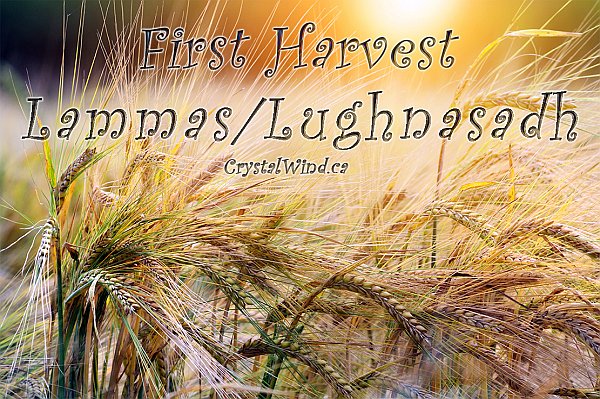
Correspondences
Symbolism: first harvest festival, aging of the Dieties, honouring of Sun Gods
Symbols: corn dollies, cornucopia, grains, the sun
Foods: breads, grains, potatoes, summer squash, cider, blackberry pies and jellies, berries, apples, roasted lamb, elderberry wine, meadowsweet tea
Plants and Herbs: ash, camphor, caraway, fern, geranium, juniper, mandrake, marjoram, thyme, sunflowers, wheat
Incense and oils: allspice, carnation, rosemary, vanilla, sandalwood, aloe, rose
Colours: red, gold, yellow, orange
Stones: aventurine, citrine, peridot, sardonyx
Animals and mythical beasts: roosters, calves, the Phoenix, griffins, basilisk, centaurs
Goddesses: all grain, agriculture, and mother Goddesses; Alphito (Greek), Ashnan (Sumerian), Bast (Egyptian), Bau (Assyro-Babylonian), Ceres (Roman), Demeter (Greek), Gaia (Greek), Ishtar (Assyro-Babylonian), Isis (Egyptian), Libera (Roman), Persephone (Greek), Rhiannon (Welsh), Robigo (Roman), Tailtiu (Irish)
Gods: all grain, agriculture, Sun, and father Gods; Cernunnos (Celtic), Dagon (Babylonian), Lahar (Sumerian), Liber (Roman), Llew (Welsh), Lugh (Irish), Neper (Egyptian), Ningirsu/Ninutra (Assyro-Babylonian), Odin (Norse), Osiris (Egyptian)
Decorations: corn, hay, gourds, corn dollies, shafts of grain, sun wheels
Activities: games, country fairs, making corn dollies, baking bread, gathering fruit, visits to fields, orchards, lakes and wells.
Spell/ritual work: Offering thanks, honouring fathers, prosperity, abundance, generosity, continued success, connectedness
Activities
Ritually sacrifice negative emotions, outworn habits, etc. by 'transferring' them into a small bread 'person' you have baked, and then throwing it, either whole or in pieces, into the ritual fire.
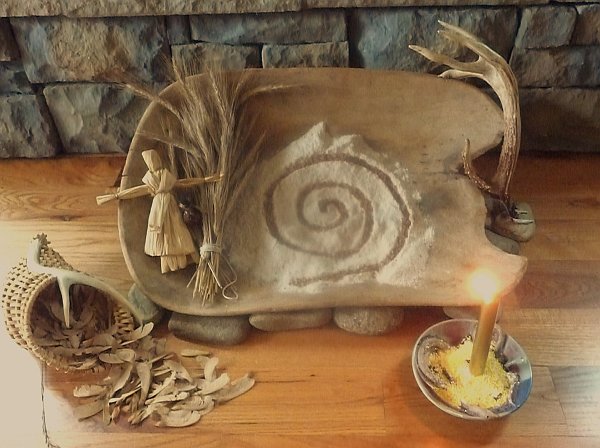
Solitary Lammas Ritual
Materials:
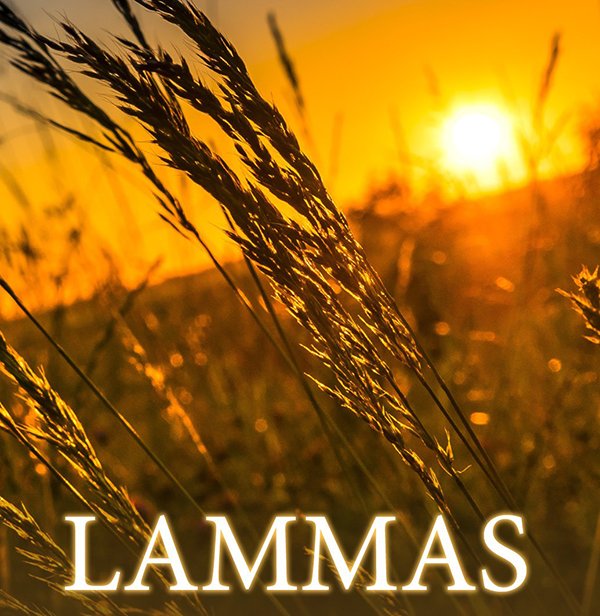
Blessed Lammas
Sun King Anointing Oil
Mix well in an airtight two ounce jar. Turn jar over once a day for at least 10 days before using. Concentrating on the Sun, rub the oil on the person or token representing the Sun.
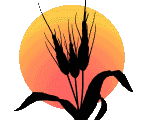
© 2009-2025 CrystalWind.ca & Author | All Rights Reserved | No reproduction without permission | Awakening Souls Since 2008.
Digital Fingerprint: This document contains unique digital markers and timestamps that enable tracking of unauthorized reproduction.
Rights and Permissions | Share via official buttons or direct link.
#CrystalWind #SpiritualJourney
Liked this article? Dive deeper into personal growth and wellness! Check out CrystalWind.ca for spiritual wisdom or explore AromaWorx.ca for natural well-being tips. Spread the positivity—share this with friends on their happiness journey!
Let’s Chat! Drop Your Thoughts Below! ![]()
Latest Articles

Imagine a world of inspiration and healing, free for all—made possible by YOU!
Donate Now—Ignite the Magic at CrystalWind.ca!

Epilepsy - Finding A Cure
Your donation can make a difference!
Help us find a cure – donate now!
Unlock Your Light: Join Lightworkers Worldwide on CrystalWind.ca!
Articles: Wiccan Wheel of the Year
Follow Us!
Featured This Month
Crystals for Virgo
As the warmth of summer begins to soften into the crispness of autumn, the Sun... Read more
Peridot: The Healer's Stone
Peridot has been used as a Power Stone for centuries. Peridot fosters emotio... Read more
The Vine: September 2nd - September 29th
The Autumnal Equinox ( Alban Elfed ) Celtic Symbol : The White Swan Read more
Mabon Magic: Ideas For Fall Decoration And R…
Welcome (almost!) to Fall! We’re turning the Great Wheel once again, toward ... Read more
Watermelon Tourmaline
Synonym: Rainbow Tourmaline The watermelon tourmaline is a rare variety t... Read more
Mabon in Modern Times: Fresh Takes on the Au…
The Mabon season begins somewhere around the 21st-22nd of September and cont... Read more
Virgo Mythology
The Virgo Myth In all of constellation mythology, few legends are as misund... Read more
Sun in Virgo
An Overview of Sun Sign Characteristics for Virgo Virgo is guided by Mercur... Read more
Sweet Violet
Sweet Violet Faithfulness and modesty. “I will always be true to you.” Helps... Read more


